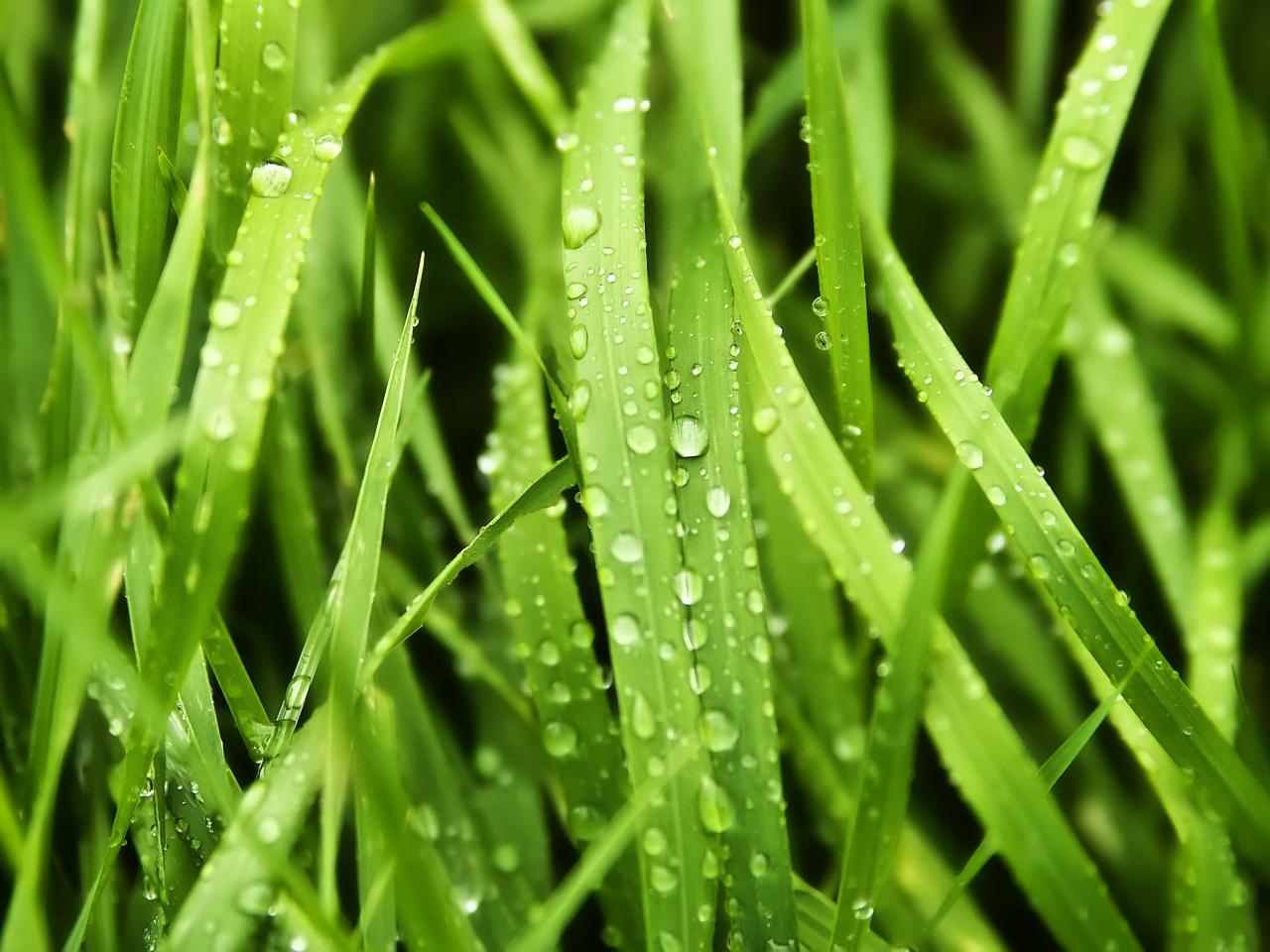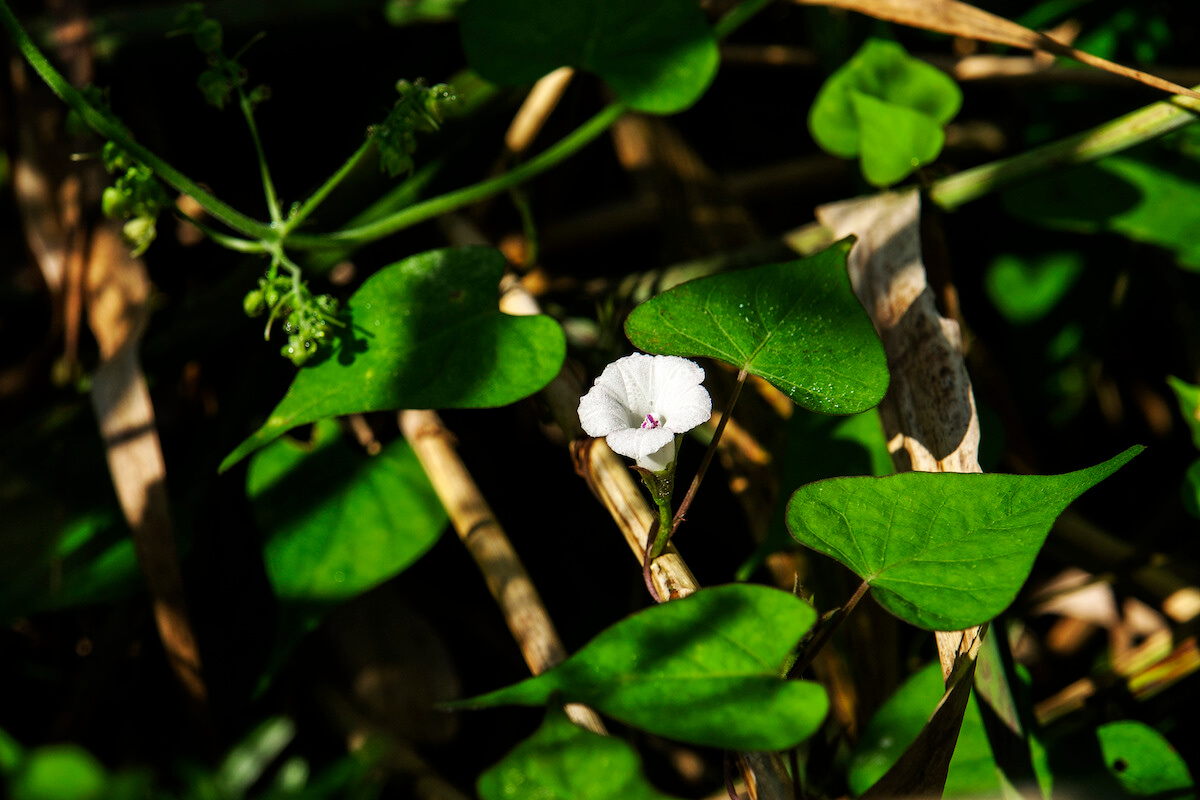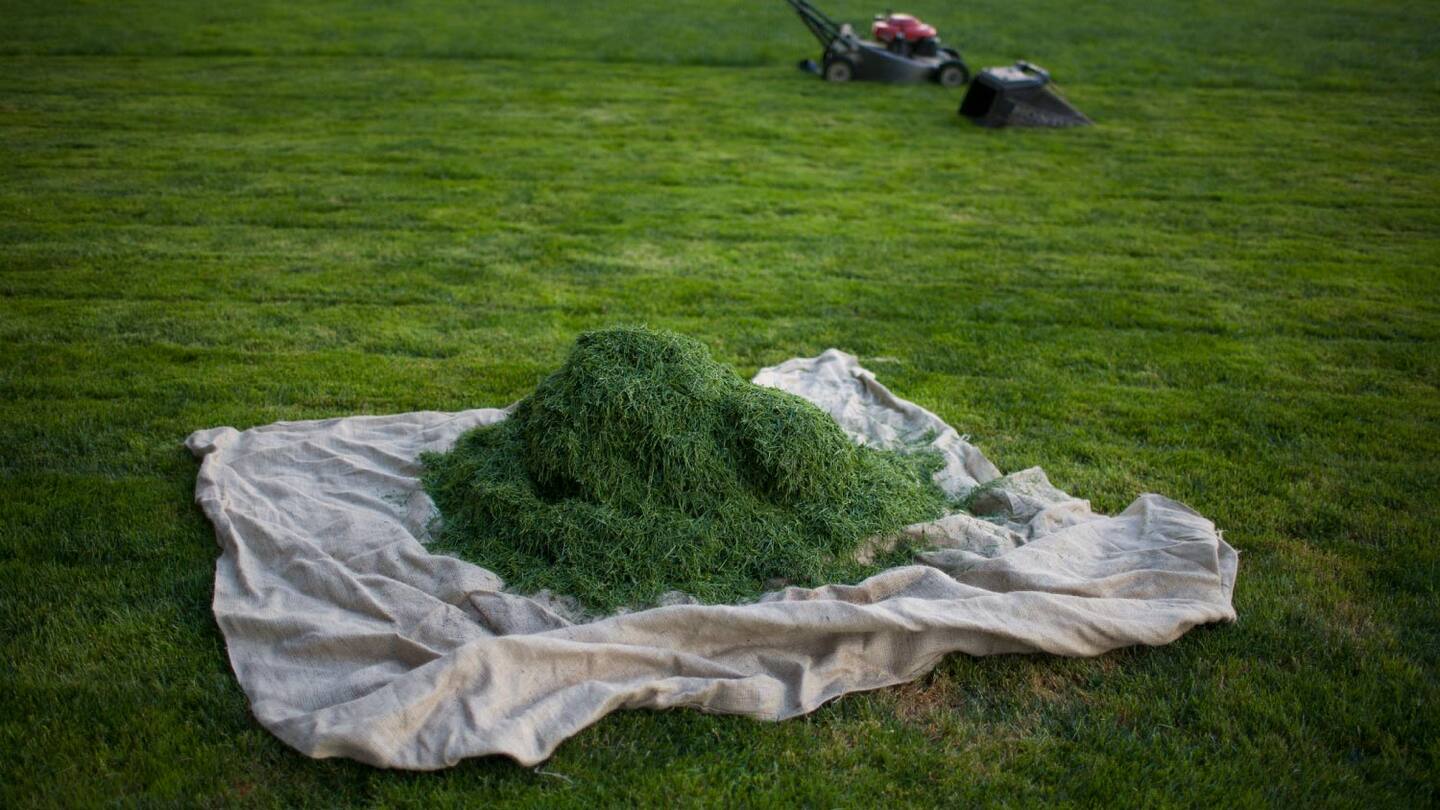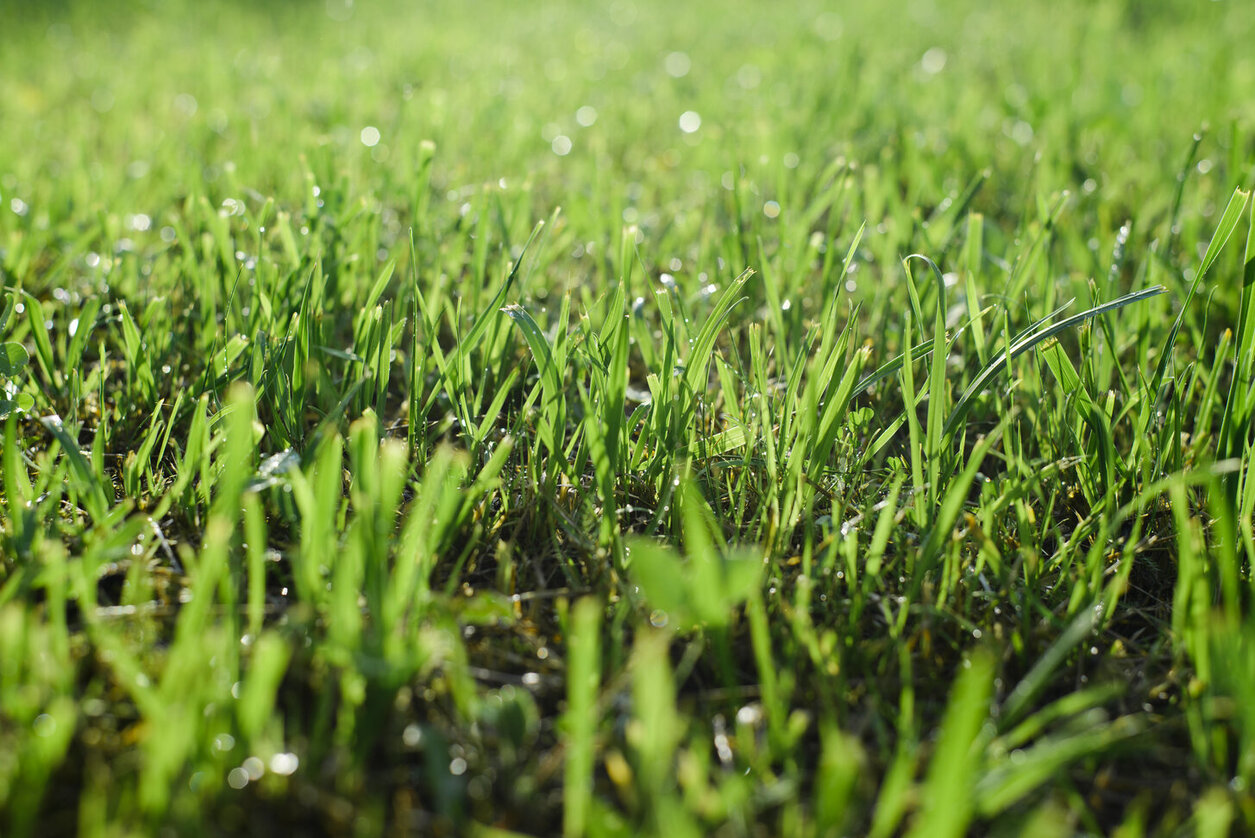Home>Gardening & Outdoor>Landscaping Ideas>Why Is The Grass Always Wet In The Morning


Landscaping Ideas
Why Is The Grass Always Wet In The Morning
Modified: August 17, 2024
Discover effective landscaping ideas to address the issue of wet grass in the morning. Improve your outdoor space with expert tips and solutions.
(Many of the links in this article redirect to a specific reviewed product. Your purchase of these products through affiliate links helps to generate commission for Storables.com, at no extra cost. Learn more)
**
Introduction
**
Picture this: it's early morning, the sun is just beginning to peek over the horizon, and you step outside to take in the fresh, dewy air. As you walk across the grass, you notice that your shoes are getting damp. What you're experiencing is the magic of morning dew.
Dew is a natural phenomenon that occurs when moisture in the air condenses on surfaces, such as grass, leaves, and petals, forming tiny droplets. This enchanting spectacle has captivated the hearts and minds of poets, gardeners, and nature enthusiasts for centuries. But what exactly is dew, and why does it appear so prominently in the early hours of the day?
In this article, we'll delve into the captivating world of morning dew, exploring the science behind its formation, the factors that influence its presence, and its significance for the natural world. Additionally, we'll uncover the cultural and folklore references that have been inspired by the beauty of morning dew. So, grab a cup of your favorite morning beverage and join us as we unravel the mysteries of the grass that's always wet in the morning.
**
Key Takeaways:
- Morning dew is formed when moisture in the air condenses on surfaces like grass, leaves, and petals in the early hours due to temperature, humidity, and condensation, providing vital moisture for plants.
- Morning dew has cultural significance, inspiring themes of luck, renewal, and transient beauty in folklore and literature across different societies, adding to its enduring mystique.
The Science Behind Dew Formation
Understanding the science behind dew formation unveils the intricate interplay of temperature, humidity, and condensation. When the sun sets in the evening, the Earth begins to cool as it radiates heat into the atmosphere. As the temperature drops, the air near the ground comes into contact with surfaces, such as blades of grass or petals, that have been warmed by the sun throughout the day. This causes the air to cool down, leading to a decrease in its capacity to hold moisture.
When the air reaches its dew point—the temperature at which it becomes fully saturated with water vapor—condensation occurs. This process is akin to the formation of sweat on a cold beverage glass during a humid day. The moisture in the air transforms into liquid droplets, adorning the surfaces with glistening dew.
Interestingly, dew formation is more pronounced on clear, calm nights, as the absence of cloud cover allows the Earth to radiate heat more effectively. Additionally, still air prevents the mixing of different air layers, enabling the ground to cool rapidly and facilitating dew formation.
Moreover, the type of surface also influences the extent of dew formation. Surfaces that conduct heat efficiently, such as metal or concrete, cool down more rapidly than insulating surfaces like soil or mulch. Consequently, these materials are more conducive to dew formation, contributing to the mesmerizing spectacle of morning dew.
This delicate dance of temperature, humidity, and condensation orchestrates the enchanting display of morning dew, transforming ordinary landscapes into ethereal, glistening vistas. As we unravel the scientific intricacies of dew formation, let’s also explore the factors that influence its presence in the morning.
**
Factors Affecting Dew Formation
While the formation of dew is primarily influenced by temperature and humidity, several other factors contribute to the extent and prominence of dew on a given morning. One such factor is the presence of vegetation. Grass, leaves, and flowers provide an ideal surface for dew to form due to their intricate structures and large surface areas. This is why lawns and gardens often exhibit a generous coating of dew in the early hours.
Furthermore, the prevailing atmospheric conditions play a crucial role in dew formation. Clear, cloudless nights allow for efficient heat radiation from the Earth’s surface, leading to a more pronounced cooling effect and, consequently, increased dew formation. Conversely, nights with cloud cover inhibit the escape of heat, resulting in less cooling and reduced dew formation.
Wind also influences the formation of dew. A gentle breeze can disrupt the thin layer of air near the ground, preventing it from cooling sufficiently for dew to form. On the other hand, calm and still air promotes the cooling process, facilitating the condensation of moisture and the subsequent formation of dew.
Additionally, the type of surface on which dew forms impacts its visibility and persistence. Smooth, non-absorbent surfaces, such as blades of grass, tend to display dew more prominently than rough or absorbent surfaces. This is why dew often appears more strikingly on well-kept lawns and delicate flower petals.
Finally, altitude and topography also influence the formation of dew. Valley bottoms and low-lying areas may experience more pronounced dew formation due to the pooling of cool, dense air, while elevated regions may exhibit less prominent dew due to reduced moisture and cooler temperatures.
By considering these various factors, we gain a deeper appreciation for the intricate orchestration of conditions that culminate in the breathtaking display of morning dew. As we continue our exploration, let’s uncover the significance of dew for the vitality and well-being of plants.
**
The grass is wet in the morning because of dew, which forms when the air cools at night and can no longer hold the moisture. This causes the water vapor in the air to condense and form dew on the grass.
Importance of Dew for Plants
While dew is a mesmerizing spectacle for humans, its significance extends far beyond mere visual appeal. For plants, especially those in arid or semi-arid regions, dew represents a vital source of moisture. In the absence of regular rainfall, dew can provide a lifeline, sustaining the flora and fauna that depend on it for survival.
During the early morning hours, when dew blankets the landscape, plants have a unique opportunity to replenish their moisture reserves. The tiny droplets of water that adorn leaves and petals are absorbed by the plant’s root systems, supplementing their hydration needs. This is particularly crucial in regions where water scarcity is a constant challenge, as dew can offer a precious source of sustenance for plants, helping them endure prolonged dry spells.
Moreover, the presence of dew can mitigate the impact of high temperatures on plants. In arid environments, where scorching sunlight and searing heat are commonplace, dew provides a protective shield. As the sun rises and temperatures soar, the residual moisture from dew can help moderate the heat stress on plants, preventing excessive water loss through transpiration and maintaining their overall health and vigor.
Furthermore, dew contributes to the ecological balance of ecosystems by supporting diverse forms of life. Insects, birds, and small mammals rely on dew as a supplementary source of water, especially during periods of drought or when natural water sources are scarce. This underscores the interconnectedness of dew with the broader web of life, highlighting its role in sustaining the intricate tapestry of natural habitats.
By recognizing the pivotal role of dew in the survival and resilience of plants, we gain a deeper appreciation for its profound impact on the natural world. As we transition from the scientific and ecological aspects of dew to its cultural and folklore significance, we uncover the rich tapestry of human fascination with this enchanting phenomenon.
**
Cultural and Folklore References to Morning Dew
Throughout history, morning dew has been steeped in symbolism, folklore, and cultural significance across diverse societies. Its presence at the break of dawn has inspired poets, musicians, and storytellers, evoking themes of renewal, purity, and ephemeral beauty.
In Celtic folklore, morning dew is believed to possess mystical properties, and collecting dew from specific plants, such as the elusive and revered “lucky clover,” was thought to bestow good fortune and prosperity upon the gatherer. This tradition underscores the deep-rooted connection between dew and luck in Celtic mythology, infusing the natural phenomenon with an aura of enchantment and auspiciousness.
Furthermore, morning dew features prominently in Japanese aesthetics and poetry, where it is celebrated for its transient elegance. The concept of “mono no aware,” or the pathos of things, encapsulates the bittersweet beauty of ephemeral phenomena, including the evanescent allure of morning dew. Poets and artists have drawn inspiration from dew-laden landscapes, weaving its delicate presence into timeless works of art and literature.
In Western literature and folklore, morning dew often serves as a metaphor for renewal and rebirth. Its appearance on petals and leaves at the cusp of daybreak symbolizes the dawning of new beginnings and the promise of rejuvenation. This symbolism is echoed in numerous works of literature and music, where dew-laden meadows and gardens evoke themes of vitality, purity, and the cyclical nature of life.
Moreover, the cultural significance of morning dew extends to various spiritual and religious traditions. In Hinduism, dew is associated with purity and cleansing, and its presence on sacred plants and herbs is considered auspicious. Similarly, in Christian iconography, dew is emblematic of spiritual nourishment and divine grace, often depicted in religious art to convey themes of spiritual renewal and enlightenment.
By exploring the rich tapestry of cultural and folklore references to morning dew, we gain a profound understanding of its enduring allure and symbolic resonance across different societies and historical epochs. As we conclude our exploration, let’s reflect on the timeless fascination and enduring mystique of the grass that’s always wet in the morning.
**
Conclusion
From the ethereal beauty of dew-laden landscapes to the profound significance of dew for plants and ecosystems, the allure of morning dew transcends the boundaries of science, culture, and folklore. As the first light of dawn illuminates the world, dew emerges as a symbol of renewal, resilience, and interconnectedness, weaving a captivating narrative that resonates across diverse traditions and natural phenomena.
Our exploration of the science behind dew formation unveiled the delicate interplay of temperature, humidity, and condensation, offering a glimpse into the intricate orchestration of natural processes that culminate in the enchanting display of morning dew. Factors such as vegetation, atmospheric conditions, and topography further enrich our understanding of the nuanced influences that shape the presence and prominence of dew in the early hours of the day.
Beyond its scientific intricacies, dew holds profound importance for the vitality and well-being of plants, serving as a precious source of moisture and a shield against the rigors of arid environments. Its role in sustaining diverse forms of life underscores its ecological significance, highlighting the interconnectedness of dew with the broader web of natural habitats.
Moreover, the cultural and folklore references to morning dew unveil its timeless resonance across different societies, where it embodies themes of luck, transient beauty, and spiritual symbolism. From Celtic traditions to Japanese aesthetics, morning dew has inspired a wealth of artistic and literary expressions, weaving its delicate presence into the fabric of human imagination and creativity.
As we conclude our journey through the captivating world of morning dew, we are reminded of its enduring mystique and the profound ways in which it intertwines with the human experience. Whether as a source of inspiration for poets and artists, a vital sustenance for plants, or a symbol of renewal and ephemeral beauty, morning dew continues to enchant and captivate, inviting us to marvel at the grass that’s always wet in the morning.
Frequently Asked Questions about Why Is The Grass Always Wet In The Morning
Was this page helpful?
At Storables.com, we guarantee accurate and reliable information. Our content, validated by Expert Board Contributors, is crafted following stringent Editorial Policies. We're committed to providing you with well-researched, expert-backed insights for all your informational needs.















0 thoughts on “Why Is The Grass Always Wet In The Morning”